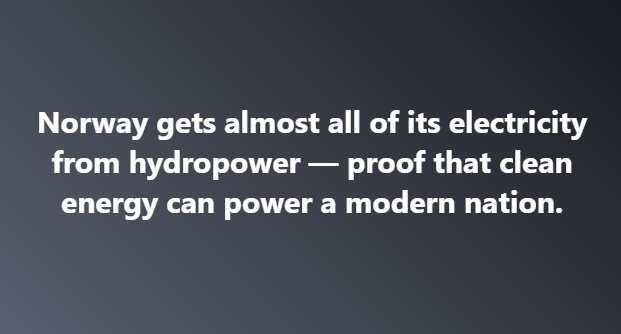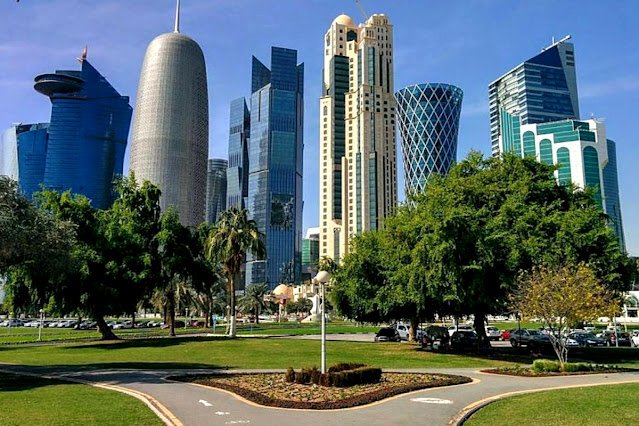Biofuel
Introduction Sustainable Urban Development
In the face of rapid urbanization and environmental challenges, cities are turning to innovative technologies to drive sustainable urban development.
These technologies offer promising solutions to enhance energy efficiency, reduce carbon emissions, improve resource management, and create more livable and resilient urban environments.
In this article, we will explore some of the innovative technologies being used for sustainable urban development and their significant contributions towards a greener future.
1. Smart Grid Systems:
Smart grid systems are revolutionizing energy management in cities. By integrating advanced metering, real-time data analytics, and renewable energy sources, these systems optimize energy distribution, reduce energy wastage, and enhance the integration of clean energy into the grid. Smart grids enable cities to achieve greater energy efficiency, lower carbon emissions, and ensure a reliable and resilient energy supply.
2. Building Energy Management Systems (BEMS):
Building Energy Management Systems are intelligent platforms that monitor, control, and optimize energy consumption within buildings. By utilizing sensors, data analytics, and automation, BEMS optimize heating, cooling, lighting, and other energy-intensive processes. This technology helps reduce energy waste, enhance occupant comfort, and improve the overall energy performance of buildings, contributing to more sustainable urban landscapes.
3. Internet of Things (IoT) for Smart Cities:
The Internet of Things (IoT) is playing a pivotal role in transforming cities into smart and sustainable entities. By connecting devices, sensors, and infrastructure, IoT enables data-driven decision-making for efficient resource management, improved traffic flow, waste management, and enhanced public services. IoT-based smart city solutions promote sustainability by optimizing resource allocation, reducing congestion, and enhancing overall urban livability.
4. Green Infrastructure:
Green infrastructure refers to the strategic incorporation of natural elements, such as green roofs, vertical gardens, and permeable pavements, into urban landscapes. These features provide multiple benefits, including improved stormwater management, heat island mitigation, air pollution reduction, and enhanced biodiversity. Green infrastructure fosters sustainable urban development by creating healthier and more resilient cities that coexist harmoniously with nature.
5. Waste-to-Energy Conversion:
Innovative waste-to-energy technologies offer sustainable solutions for urban waste management. Advanced processes such as anaerobic digestion, gasification, and thermal treatment convert organic waste into renewable energy sources, such as biogas and biofuels. These technologies not only reduce the environmental impact of waste but also contribute to the generation of clean energy, closing the loop on resource utilization.
6. Advanced Transportation Systems:
Advancements in transportation technologies are crucial for sustainable urban development. Electric vehicles (EVs), intelligent transportation systems, and shared mobility platforms are revolutionizing urban mobility. EVs reduce carbon emissions and air pollution, while intelligent transportation systems optimize traffic flow, reduce congestion, and enhance safety. Shared mobility platforms encourage a shift from car ownership to more sustainable modes of transportation, reducing the need for parking spaces and easing traffic congestion.
Fact and data Sustainable Urban Development
Sustainable urban development refers to the practice of creating cities and urban areas that are environmentally friendly, socially inclusive, and economically viable over the long term. It involves considering the interconnections between urban planning, infrastructure development, resource management, and quality of life for residents.
Here are some facts and data related to sustainable urban development:
Rapid urbanization: According to the United Nations, more than half of the world’s population currently lives in cities, and this number is expected to reach 68% by 2050. This rapid urbanization poses significant challenges for sustainable development.
Environmental impact: Cities have a substantial environmental footprint, accounting for over 70% of global energy-related carbon dioxide emissions. Sustainable urban development aims to reduce this impact by promoting energy efficiency, renewable energy sources, waste management, and sustainable transportation systems.
Green infrastructure: Green infrastructure refers to the incorporation of natural elements such as parks, green spaces, and urban forests into the urban fabric. Studies have shown that access to green spaces improves air quality, reduces urban heat island effects, enhances biodiversity, and promotes physical and mental well-being among residents.
Compact and mixed-use development: Compact and mixed-use development promotes the efficient use of land by creating walkable, transit-oriented communities. This approach reduces urban sprawl, minimizes the need for private vehicles, and encourages social interaction and economic vitality.
Smart cities: Smart city initiatives leverage technology and data to improve urban services, enhance sustainability, and optimize resource management. These include the use of smart grids, intelligent transportation systems, and data-driven decision-making for urban planning and governance.
Sustainable transportation: Sustainable transportation systems prioritize public transit, cycling infrastructure, and pedestrian-friendly streets. Encouraging active transportation modes and reducing reliance on private vehicles can lower greenhouse gas emissions, improve air quality, and enhance accessibility for all residents.
Social equity: Sustainable urban development emphasizes social equity by ensuring that all residents have access to affordable housing, healthcare, education, and other essential services. It aims to reduce inequalities and create inclusive communities.
Economic benefits: Sustainable urban development can provide economic benefits such as job creation, improved productivity, and enhanced competitiveness. Investing in renewable energy, green building technologies, and sustainable industries can stimulate economic growth while minimizing environmental impact.
Global initiatives: Several international initiatives promote sustainable urban development, including the United Nations Sustainable Development Goals (SDGs), the New Urban Agenda, and the C40 Cities Climate Leadership Group. These platforms facilitate knowledge sharing, collaboration, and policy implementation across cities worldwide.
Case studies
Many cities have implemented sustainable urban development strategies and achieved notable successes. Examples include Copenhagen, Denmark, known for its extensive cycling infrastructure and commitment to renewable energy; Curitiba, Brazil, renowned for its efficient public transit system; and Vancouver, Canada, recognized for its sustainable building practices and emphasis on green spaces.
These facts and data highlight the importance of sustainable urban development in addressing environmental, social, and economic challenges associated with urbanization. By adopting sustainable practices, cities can become more resilient, livable, and inclusive for current and future generations.
Conclusion for Sustainable Urban Development
Innovative technologies are driving sustainable urban development, providing cities with the tools to tackle environmental challenges and create greener and more livable spaces.
Smart grid systems, building energy management systems, IoT solutions, green infrastructure, waste-to-energy conversion, and advanced transportation systems are just a few examples of the technologies reshaping our urban landscapes.
By embracing these innovative solutions, cities can achieve greater energy efficiency, reduced carbon emissions, improved resource management, and enhanced quality of life for their residents. With continued advancements and the integration of these technologies, we can pave the way to a sustainable and thriving future for our cities.
https://www.exaputra.com/2023/05/innovative-technologies-for-sustainable.html
Renewable Energy
Why Norway Is a World Leader in Renewables
 It’s true that Norway is a world leader in renewable energy. To be fair, however, they have a few things going for them.
It’s true that Norway is a world leader in renewable energy. To be fair, however, they have a few things going for them.
One is the hydro resource itself, which is enormous, especially considering nation’s small population.
The other, and it’s just as important, is the fact that Norway really wants to remove fossil fuels from its grid-mix. They sport of extremely enlightened people who actually care about the welfare of the people in the world around them
Renewable Energy
What Can Trump Destroy?
 In other posts, we’ve looked at the prospects of a massive refusal on the part of America’s top military to follow a manifestly illegal order, like invading Canada.
In other posts, we’ve looked at the prospects of a massive refusal on the part of America’s top military to follow a manifestly illegal order, like invading Canada.
What about a less dramatic case? What if I were the chief White House superintendent and Trump told me to bulldoze the East Wing? I’d say, “Sorry, I resign as of this minute. You may find someone who will destroy a national treasure, but it’s sure as hell isn’t going to be me.”
Renewable Energy
Is the System Rigged?
If I were writing the piece at left, I wouldn’t say, “the system is rigged,” because that implies some clandestine.
I would saw the system is designed to make rich people richer, and to ignore the needs of the masses. It’s working exactly as it’s designed to.
Now it’s true that all this is more obvious now than it was 50 years ago when the average American came out of college and got an office job that enabled him to earn a living wage.
-
Climate Change2 years ago
Spanish-language misinformation on renewable energy spreads online, report shows
-
Climate Change3 months ago
Guest post: Why China is still building new coal – and when it might stop
-
Climate Change Videos2 years ago
The toxic gas flares fuelling Nigeria’s climate change – BBC News
-

 Greenhouse Gases1 year ago
Greenhouse Gases1 year ago嘉宾来稿:满足中国增长的用电需求 光伏加储能“比新建煤电更实惠”
-
Greenhouse Gases3 months ago
Guest post: Why China is still building new coal – and when it might stop
-

 Climate Change1 year ago
Climate Change1 year ago嘉宾来稿:满足中国增长的用电需求 光伏加储能“比新建煤电更实惠”
-

 Carbon Footprint2 years ago
Carbon Footprint2 years agoUS SEC’s Climate Disclosure Rules Spur Renewed Interest in Carbon Credits
-
Renewable Energy4 months ago
US Grid Strain, Possible Allete Sale




